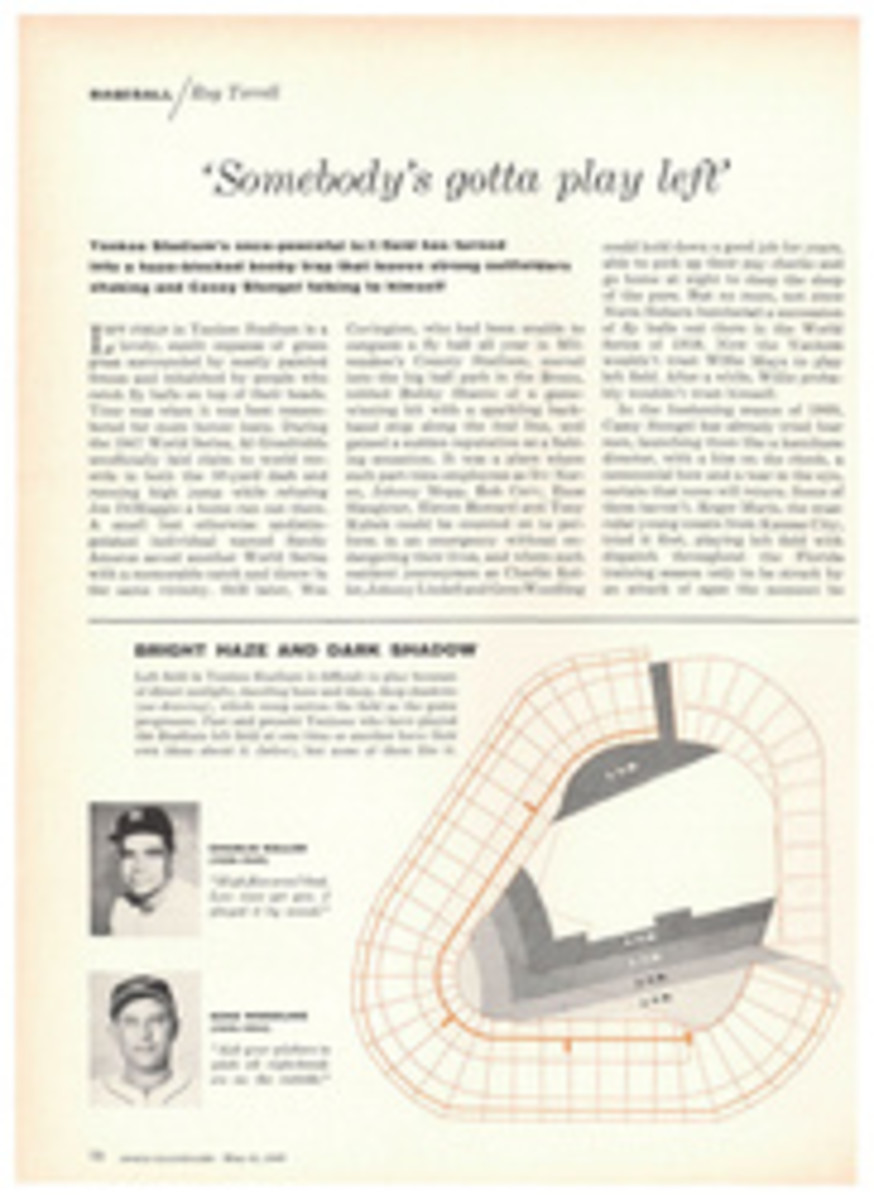
Cruise of the Bon Vivants
The name on her stern is Algol, her home port reads Miami, her course this month is down the Exuma cays of the Bahamas, and invitations to take a meal aboard should be accepted. As has been customary for a dozen springs, the Algol is in the hands of a party of serious fishermen from the Washington, D.C. area who are also thoughtful eaters.
The Bon Vivants is what they call themselves, and one of them, Clarke Daniel, explains how matters are arranged: "Any important game fish can be fought after 6:30 p.m. But one of our regulations is that anyone found hamming around with a shark after that time gets his line cut. It interferes with cocktails and dinner."
Daniel, a builder and real estate developer in Washington, used to own the Algol with his brothers Raleigh and Cushing (she is now chartered to the group). His friend Joseph H. Deckman, head of a building supply company and a onetime All-America lacrosse player at the University of Maryland, came aboard 11 years ago to recuperate from a heart attack and took over in the galley. He plans the menus, takes care of stocking the larder and wine cellar and does most of the cooking. The selection of cigars and the preparation of conch, however, are conceded to be Clarke Daniel specialties. And hors d'oeuvres, aspics and Scandinavian dishes are the province, when he is on board, of William Press, executive vice-president of the Washington Board of Trade. Ralph Powers, Maryland lawyer and gentleman farmer, is commander of the bar. Other members of the group—they alternate from one cruise to the next in filling the Algol's normal passenger complement of six—are Rowland Kirks, a Washington lawyer and law school dean; Lewis Breuninger, president of a building concern; and Clarke Daniel's brothers, Raleigh and Cushing.
The Algol's galley has a four-burner propane gas stove that boasts both broiler and oven. In addition to a large refrigerator there is a 16-cubic-foot freezer locker. Even at that, Deckman complains about his storage space for food being taken up by fishing bait. Actually, whether Deckman is spreading a meal in the cabin, on the after-deck or (as at left) on a Bahamian wharf, his effects would do credit to a well-appointed kitchen anywhere. His menus take full advantage of local foods, such as the excellent native bread, tropical hot peppers and pigeon peas. Fresh-caught fish provide the makings of soups and salads as well as broiled and baked dishes. The yellow-fin rockfish salad being enjoyed by the group at left is composed of the cooked and flaked fish mixed with mayonnaise, capers, chopped celery, parsley and seasonings, and a garnish of lettuce, avocado, tomato and olives. But the Deckman cuisine—and a characteristic inventiveness about ways of preparation—extends also to such items as beefsteak, Rock Cornish game hen and pheasant.
Here is one of Joe Deckman's creations that was the hit of last year's cruise—a recipe which turns an inexpensive cut of beef into a mouth-watering dinner. The Bon Vivants washed it down with a banner-year Burgundy, Chambolle-Musigny 1945.
STUFFED FLANK STEAK DECKMAN (serves six)
1 large or 2 small flank steaks (about 2½ pounds, trimmed)
1 pound ground veal
1 small can sliced mushrooms
‚⅛ pound butter
1 egg
2 stalks celery, chopped fine
1 medium onion, chopped fine
1 carrot, cut into small dice
2 tablespoons chopped parsley
1 clove garlic, crushed
3 tablespoons bread crumbs
3 tablespoons grated mild cheese
3 tablespoons pine nuts
¼ teaspoon basil
Salt and pepper
4 tablespoons Madeira wine
4 ounce p√¢té de foie gras
2 cup beef stock
2 tablespoon flour (approximately)
Lay the flank steak on a cutting board. With a small, very sharp knife, cut a 6-inch slot in side of steak and work knife into the center to create a pouch. Extend the pouch to within one inch of the edge of the steak in all directions. Score top of steak lightly with a diamond pattern.
Sauté the mushrooms in the butter until brown. Beat the egg. Mix egg, ground veal and vegetables together with bread crumbs, grated cheese, pine nuts, sautéd mushrooms and seasoning. Add 2 tablespoons of Madeira. The result makes up the stuffing.
Spread p√¢té de foie gras over inside of the pocket which you have cut in the steak. Force stuffing into this pocket and secure the opening with a skewer or thread. Place stuffed steak in a baking pan and add½ cup of beef stock with the balance of the Madeira. Keep adding beef stock as it evaporates during the cooking. Bake in a 300° oven for 2 to 2½ hours or until the steak is well done.
Remove steak from pan and make a thick sauce by adding a little flour and beef stock to the juices in the baking pan and cooking for several minutes. Carve by cutting slices across the steak, so that each slice includes some stuffing in its center.
PHOTO
AN OCEAN SETTING FOR A FEAST: Seemingly isolated in a vast expanse of sand, sea and sky, good companions enjoying annual Bahamas cruise lunch magnificently on yellow-fin rockfish salad and a bottle of Corton Charlemagne 1947. The table is set up on a wharf overlooking Sandy Point, near the southeast tip of Abaco, where the sportsmen-epicures have put in for a day of bonefishing on the tidal flats. Clockwise at table, from the left, are Joe Deckman, amateur chef of the group, Ralph Powers, Clarke Daniel and (back to camera) Cushing Daniel.
PHOTO
"ALGOL" BOASTS A BROILER AND OVEN AS WELL AS 200 HORSES

